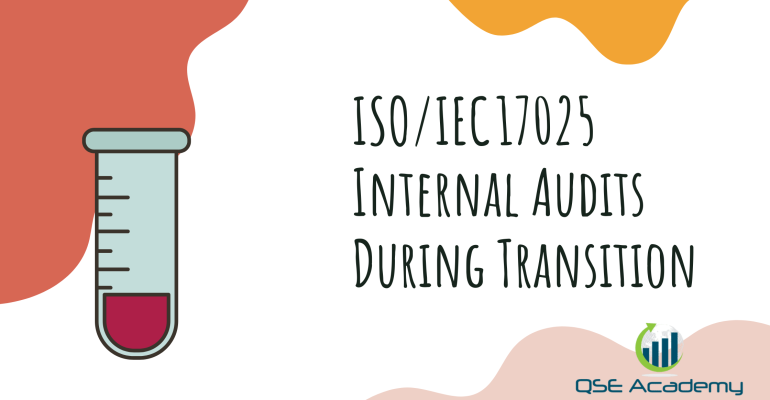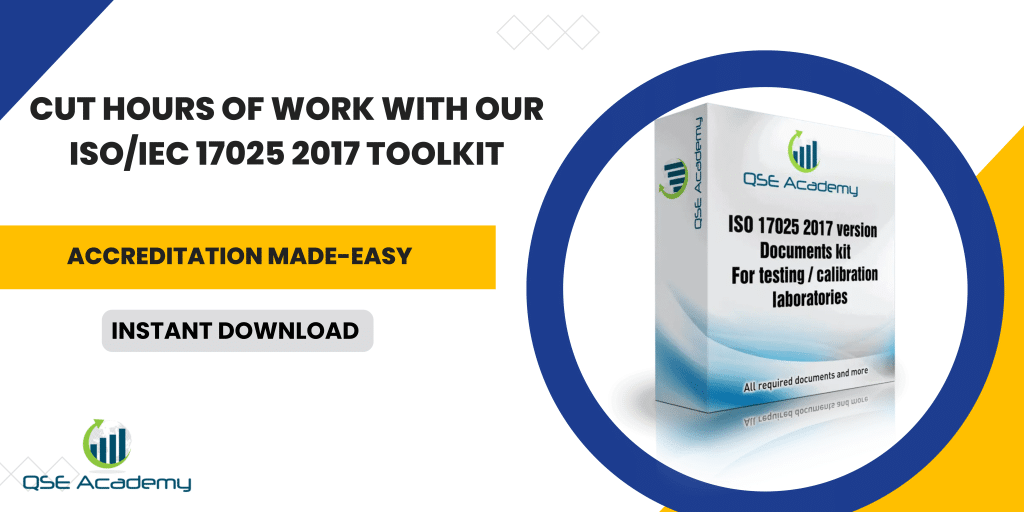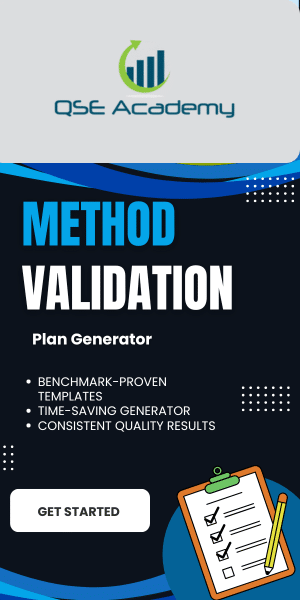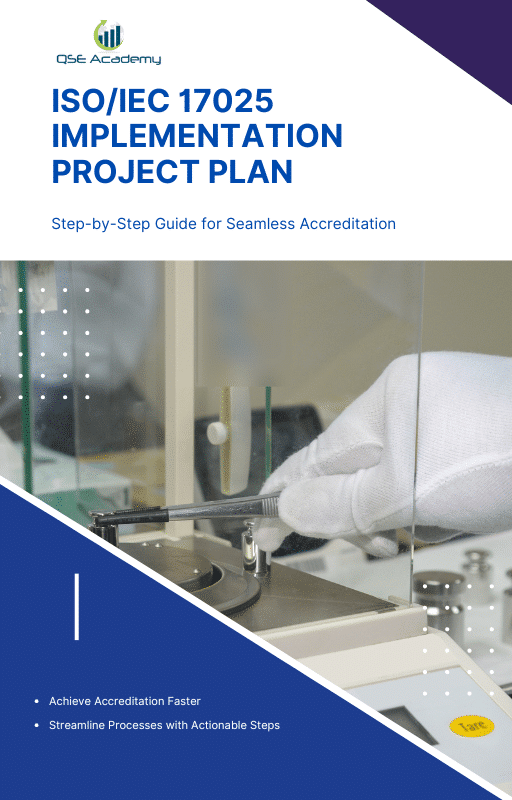ISO/IEC 17025 Internal Audits During Transition
Last Updated on October 13, 2025 by Melissa Lazaro
Why Internal Audits Matter During the ISO/IEC 17025 Transition
When labs begin shifting from the 2005 version of ISO/IEC 17025 to 2017, one of the first questions I hear is:
“Do we need to update our internal audit process too?”
The short answer—absolutely.
Internal audits are the backbone of any successful transition. They’re how you catch the gaps before your assessor does, and how you prove that your system isn’t just compliant on paper but actually working.
In every lab I’ve supported, the most successful transitions had one thing in common: a strong, honest internal audit. It’s not about checking boxes or playing detective—it’s about taking a clear-eyed look at how well your new processes actually function.
When done right, internal audits during transition help you:
-
Identify where the 2017 requirements aren’t fully integrated yet.
-
Test how well your staff understand the changes.
-
Build confidence before the external audit.
Think of it this way—your internal audit is your practice game before the championship. The better you prepare here, the smoother your accreditation body visit will go later.
Understanding the Role of Internal Audits in ISO/IEC 17025:2017
Internal audits under the 2017 version aren’t just about checking whether you “have” a procedure—they’re about checking whether that procedure works.
Clause 8.8 of ISO/IEC 17025 shifts the focus from compliance to effectiveness. Instead of simply confirming that a process exists, auditors now look at whether it achieves its intended results. That means your internal audits should do the same.
Here’s what’s changed in spirit:
-
From paperwork to performance. You’re not auditing documents—you’re auditing outcomes. Are your controls and processes delivering reliable, impartial results?
-
From static schedules to risk-based priorities. The new standard expects you to audit areas based on risk and importance, not just routine. A high-risk process should be checked more often than a low-risk one.
-
From auditing “for compliance” to auditing “for improvement.” The goal is to learn what’s working, what’s not, and how to make it better before external assessors arrive.
In my experience, labs that view internal audits as an opportunity rather than an obligation are the ones that thrive. They catch their weak spots early, fix them fast, and walk into accreditation assessments without anxiety.
Pro tip: Treat every internal audit as a small rehearsal of your external one. When you approach it that way, you build consistency and confidence long before the official visit.
Preparing an Internal Audit Plan for Transition
A good internal audit doesn’t start with a checklist—it starts with a plan.
When a lab begins its ISO/IEC 17025:2017 transition, I always recommend pausing before diving into the audit itself. Why? Because the right plan helps you target what really matters instead of spreading yourself thin.
Here’s how to approach it:
Start with a Clause Comparison.
Pull out both versions—2005 and 2017—and map the clauses side by side. This helps you see where new requirements have been added or changed (like risk management, impartiality, and decision rules). From there, you can decide which areas deserve deeper attention during your audits.
Set Priorities Based on Risk and Change.
Don’t try to audit everything at once. Focus first on areas most affected by the new version—such as technical competence, documentation flexibility, and management responsibilities. These are where most labs trip up during transition.
Create a Realistic Schedule.
I’ve seen labs plan “one big audit” to cover the entire transition—and burn out halfway through. Instead, break your audit into manageable stages across a few months. This gives your team time to fix issues between sessions and show continual improvement.
Assign Auditors Wisely.
Choose auditors who understand both versions of the standard or have been retrained on the 2017 clauses. If that’s not possible, pair experienced and new auditors together. It builds capacity and strengthens objectivity.
A thoughtful plan not only keeps your transition on track—it also shows assessors that you’re managing the process deliberately, not reactively.
Pro Tip: Include your transition milestones (like policy updates or training sessions) in your audit schedule. That way, your audits naturally align with your implementation progress.
Conducting the Internal Audit – Practical Approach for Transitioning Labs
Once your plan’s ready, it’s time to roll up your sleeves. The real test of an internal audit during transition isn’t how many findings you record—it’s how much clarity you gain about your system’s readiness.
Here’s how I usually guide labs through this stage:
Start with an Opening Meeting.
Set the tone by explaining why this audit matters. Let your team know it’s not about fault-finding—it’s about making sure everyone’s confident in how the new requirements work in practice. When people feel included, they’re more open and cooperative.
Use a Process-Based Approach.
Forget about checking clause by clause. Instead, follow the actual flow of work—from sample receipt to reporting results. Ask questions like:
-
“How do you ensure impartiality in this step?”
-
“What risks could affect this process?”
This approach gives you real insight into whether procedures work as intended under the 2017 version.
Evaluate Both Management and Technical Areas.
Balance your focus. Check quality policies, documentation, and reviews—but also observe calibration, testing, and equipment control. The best audits blend both sides seamlessly.
Capture Objective Evidence.
Record facts, not opinions. Instead of writing “procedure not followed,” note what you saw and what was expected. Assessors appreciate clear, factual findings—they make corrective action easier and defensible.
Stay Curious, Not Confrontational.
In my experience, the best internal auditors ask genuine questions. “Can you walk me through how you verify this?” often uncovers more than “Show me your record.” You’ll find nonconformities faster when conversations feel natural, not forced.
Pro Tip: Pair an experienced auditor with a junior staff member. It’s one of the easiest ways to build competence internally while adding fresh perspective to the process.
A well-conducted audit isn’t just a compliance tool—it’s a mirror that shows how ready your lab really is for the transition.
Evaluating Findings and Implementing Corrective Actions
The real value of an internal audit doesn’t come from spotting nonconformities—it comes from what you do with them.
I’ve seen labs that treat findings like bad news, when in reality, they’re gold mines of improvement opportunities. The faster you embrace that mindset, the smoother your transition will go.
Here’s how to handle findings the smart way:
1. Classify Findings Clearly.
Not every issue deserves the same weight. Distinguish between:
-
Major nonconformities – serious gaps that could affect results or impartiality.
-
Minor nonconformities – isolated or low-risk issues.
-
Observations – opportunities to improve, even if the system still meets requirements.
Clear classification helps management prioritize fixes without panic.
2. Find the Root Cause, Not the Quick Fix.
It’s tempting to just “update the procedure” and call it a day. But in ISO 17025:2017, auditors expect more than that—they want to see that you’ve understood why the issue happened.
Ask:
-
Was it a process flaw?
-
Was training unclear?
-
Was the risk not properly assessed?
Once you find the root cause, your corrective actions actually stick.
3. Make Corrective Actions Risk-Based.
Under the 2017 version, not every finding deserves the same level of response. Address high-risk issues immediately and monitor low-risk ones over time. It shows assessors that you’re applying risk-based thinking in real decisions—not just theory.
4. Verify and Close the Loop.
Always check if your corrective action worked. Did the issue disappear or just move somewhere else? A simple follow-up audit or effectiveness check can save you from repeat findings later.
I once worked with a calibration lab that used audit findings to redesign its equipment maintenance log. A small improvement—yet it eliminated three recurring nonconformities. That’s the kind of impact a thoughtful corrective action can have.
Pro Tip: Keep a “Corrective Action Tracker.” It helps you monitor progress, assign responsibility, and prove continuous improvement during your transition audit.
Leveraging Internal Audits to Prepare for the Transition Assessment
Your internal audits aren’t just a compliance checkbox—they’re your dress rehearsal for the real thing.
When done well, they show your accreditation body that your transition wasn’t rushed, reactive, or half-understood—it was deliberate and data-driven.
Here’s how to make that connection clear:
1. Treat Internal Audit Records as Evidence of Readiness.
Assessors love seeing proof that you’ve already tested your system. Keep your internal audit reports, corrective-action tracker, and follow-up results organized and easy to access. These documents tell a story: you identified gaps, fixed them, and confirmed effectiveness.
2. Link Findings to Specific Clauses.
When you reference the exact ISO/IEC 17025:2017 clauses in your audit reports, it helps assessors immediately see that you understand the new structure. It also reinforces that your team knows the standard inside out.
3. Highlight Improvements, Not Just Conformities.
Don’t shy away from showing the changes you made based on audit results. Accreditation bodies value proactive improvement over “perfect” paperwork. If you found a weakness and addressed it systematically—that’s proof of maturity.
4. Use the Internal Audit as a Mock Assessment.
Simulate the real audit experience: hold opening and closing meetings, present evidence logically, and ask staff to explain processes in their own words. The more comfortable they get now, the more confident they’ll be later.
I worked with one testing lab that ran two full mock audits before their transition assessment. By the time the real assessor arrived, every staff member could explain their process clearly—no rehearsed answers, just genuine understanding. Their transition audit ended with zero majors and high praise for preparedness.
Pro Tip: Maintain an “Audit Improvement Tracker.” It doesn’t just record findings—it tracks lessons learned, improvements made, and measurable outcomes. Assessors see that as proof of continuous improvement and ownership of your quality system.
Common Mistakes in Transition Internal Audits (and How to Avoid Them)
Even experienced labs can trip up when updating their internal audit approach for ISO/IEC 17025:2017. The problem usually isn’t effort—it’s focus. Most teams work hard but audit the wrong things, or use old habits that no longer fit the new version.
Here are the most common pitfalls I see—and how to stay clear of them:
1. Copying Old Checklists.
Many labs reuse their 2005 audit checklist with a few edits. That’s a fast track to missed gaps. The 2017 version reorganized clauses, added risk-based elements, and changed emphasis. Build a fresh checklist that matches the new structure—and your actual lab processes.
2. Skipping Auditor Training.
Auditing under the 2017 standard feels different. The focus on effectiveness and risk means auditors need new skills. If your team hasn’t been trained on the updated requirements, schedule that first. Otherwise, you’ll end up with findings that don’t reflect the new intent.
3. Treating the Audit as a One-Time Task.
Transition isn’t a single event—it’s a series of adjustments. Labs that do one audit and call it done usually struggle later when new issues appear. Spread your audits across the transition period so you can address findings progressively.
4. Overlooking Technical Personnel Input.
Quality managers often lead audits alone, but the 2017 standard integrates technical competence more deeply. Get your technical staff involved—they can spot gaps an administrative auditor might miss.
5. Not Following Up on Actions.
A finding without follow-up is just a note on paper. Always verify corrective actions and document effectiveness checks. Assessors can tell immediately when improvements haven’t been sustained.
One lab I worked with had beautifully written audit reports but never verified if actions worked. During their transition assessment, the same issues resurfaced—and turned into majors. They learned the hard way that documentation isn’t the same as improvement.
Pro Tip: Refresh your internal audit program annually—even after you’ve transitioned. ISO 17025:2017 emphasizes continuous improvement, and your audit approach should evolve along with your lab.
FAQs – Internal Audits During ISO/IEC 17025 Transition
Over the years, I’ve noticed that certain questions always come up during transitions. These are the ones I hear most often—along with straightforward answers that keep things practical.
Q1: How often should we conduct internal audits during the transition?
At least once before your transition audit—but ideally twice. The first helps identify gaps between your current system and ISO/IEC 17025:2017 requirements. The second confirms that your corrective actions worked. If your lab has major process changes, plan shorter, targeted audits in between.
Q2: Can the Quality Manager audit their own area?
Technically, no—unless you can demonstrate impartiality. The 2017 version is clear about avoiding conflicts of interest, even internally. If your Quality Manager must audit their own process, have someone else review their findings for objectivity.
Q3: What audit records do assessors expect to see during the transition?
They’ll want to see:
-
Your audit plan or schedule (showing coverage of all 2017 clauses)
-
Audit reports with evidence and clause references
-
Corrective action records linked to findings
-
Follow-up results proving effectiveness
The cleaner and more traceable your records, the better impression you’ll make.
Q4: Do internal audits need to cover both management and technical requirements?
Yes—and that’s where many labs fall short. The transition made technical competence just as important as quality management. Always balance your audits to cover both sides: calibration, measurement uncertainty, equipment, staff competence, and document control.
Pro Tip: Treat FAQs like part of your training toolkit. Keep a running list of staff questions about ISO/IEC 17025 and use them in refresher sessions. It builds understanding across your team—and prepares everyone for the same questions assessors will ask.
Turning Internal Audits into Transition Confidence
Internal audits are more than just a requirement—they’re your safety net during transition. Done right, they give you a clear view of how well your lab is adapting to ISO/IEC 17025:2017 and where the weak spots still lie.
In every successful transition I’ve been part of, the labs that treated internal audits as a learning tool—not a chore—ended up ahead. They spotted issues early, involved their teams, and walked into accreditation audits confident and prepared.
By now, you know what a strong transition audit looks like:
-
Planned around the new clauses, not the old ones.
-
Focused on risks, performance, and competence.
-
Backed by clear findings, corrective actions, and follow-ups.
If you’re still in the middle of your transition, start with one solid internal audit. Use it to learn, adjust, and improve before assessors ever arrive. That one exercise can be the difference between scrambling to fix findings and showcasing a system that’s truly under control.
And if you need a little help refining your approach, our team at QSE Academy can support you with:
-
Complete ISO/IEC 17025 Internal Audit Checklists tailored for transition,
-
Customized documentation updates, and
-
Consultation sessions to coach your auditors and quality team through the process.
Your next step: download our free ISO/IEC 17025 Internal Audit Transition Checklist or book a quick call with one of our consultants. You’ll get practical advice from people who’ve helped labs just like yours make the 2017 transition smoothly—and confidently.
I hold a Master’s degree in Quality Management, and I’ve built my career specializing in the ISO/IEC 17000 series standards, including ISO/IEC 17025, ISO 15189, ISO/IEC 17020, and ISO/IEC 17065. My background includes hands-on experience in accreditation preparation, documentation development, and internal auditing for laboratories and certification bodies. I’ve worked closely with teams in testing, calibration, inspection, and medical laboratories, helping them achieve and maintain compliance with international accreditation requirements. I’ve also received professional training in internal audits for ISO/IEC 17025 and ISO 15189, with practical involvement in managing nonconformities, improving quality systems, and aligning operations with standard requirements. At QSE Academy, I contribute technical content that turns complex accreditation standards into practical, step-by-step guidance for labs and assessors around the world. I’m passionate about supporting quality-driven organizations and making the path to accreditation clear, structured, and achievable.












